
A storm and trailing cold front will continue to slowly move through the Gulf Coast and Southeast U.S. through this weekend with widespread rain showers and isolated thunderstorms. A fast-moving clipper storm may bring several inches of snow to the north-central Plains, Midwest, eastern Great Lakes, and Northeast regions this weekend. Read More >
Duluth, MN
Weather Forecast Office

Winter 2021-2022 can be described as cool and snowy for most places. December was above normal temperature-wise with the mid-December “megastorm” bringing the warmest temperatures of the winter for Duluth and Ashland. With that warm weather, snowfall flatlined and became below average at Duluth and International Falls, but a pattern shift just after Christmas brought much colder and active weather that persisted through January and February. A cold northwesterly flow regime dominated with plenty of cold air outbreaks and light snow events from Alberta clipper systems. A few larger systems were sprinkled in as well, including several large lake-enhanced systems that brought impressive snowfall amounts to the South Shore. We also experienced a rare snow squall event on February 18, which started in our region and spread across the northeastern US.
Duluth

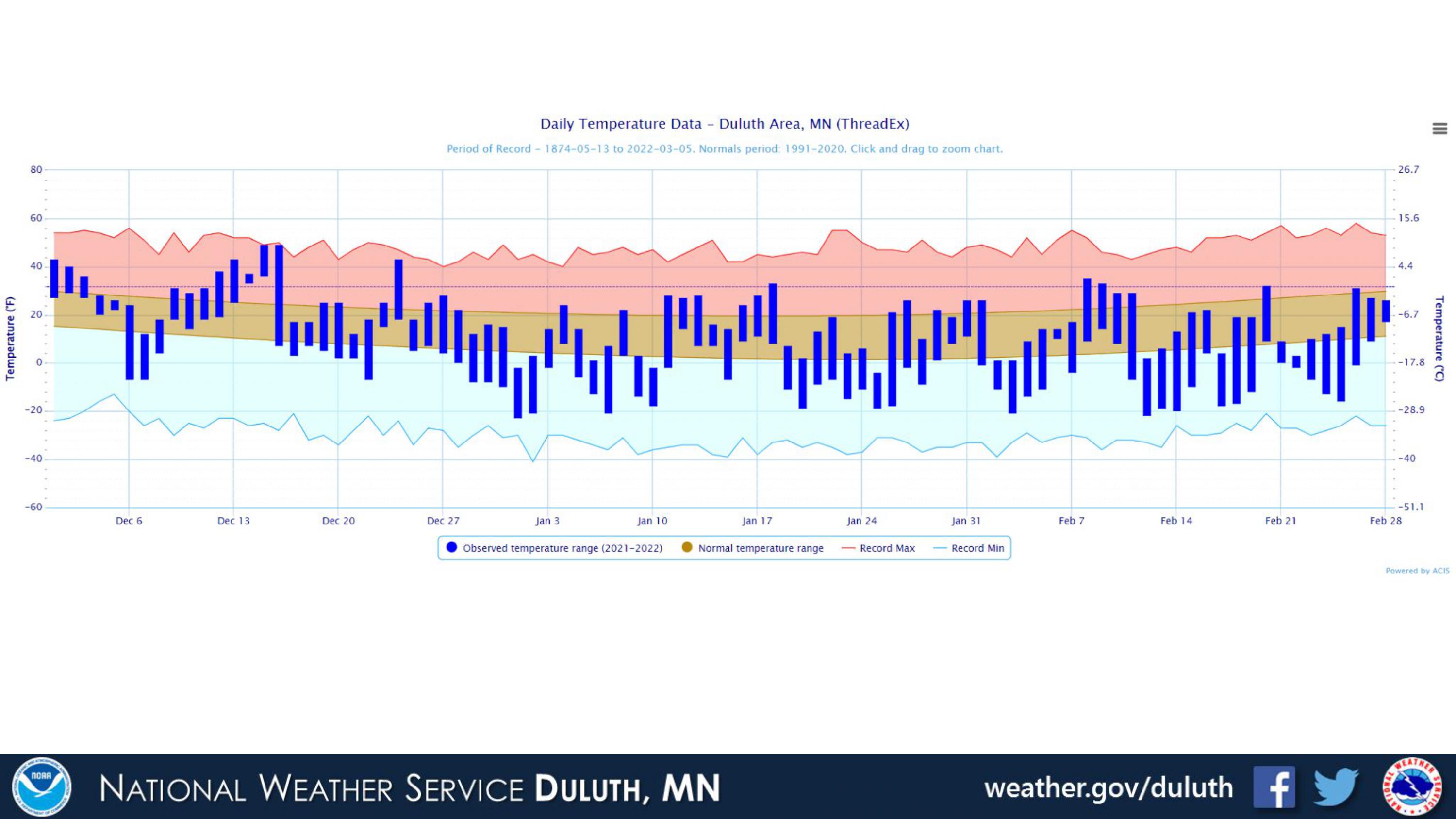
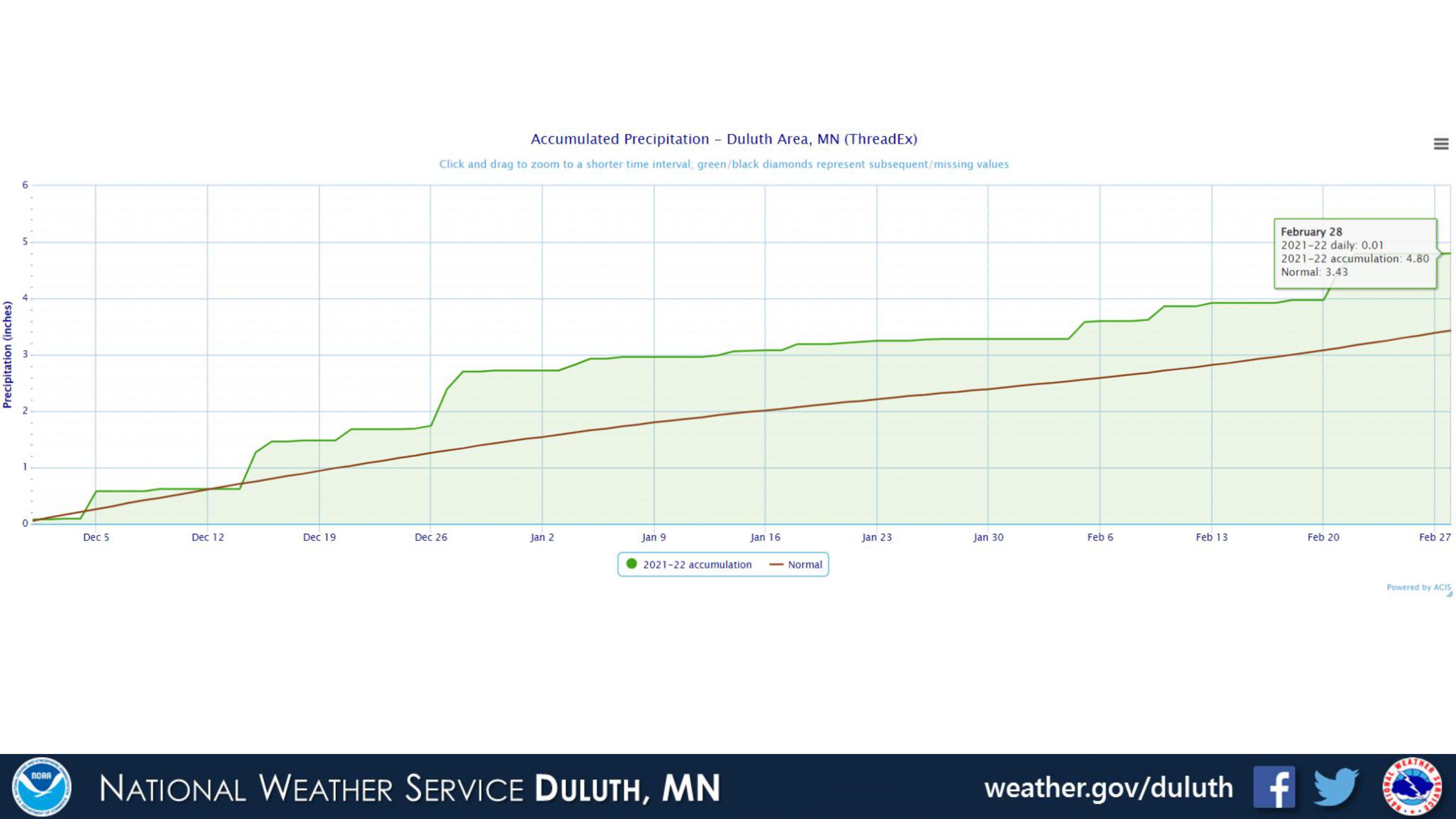
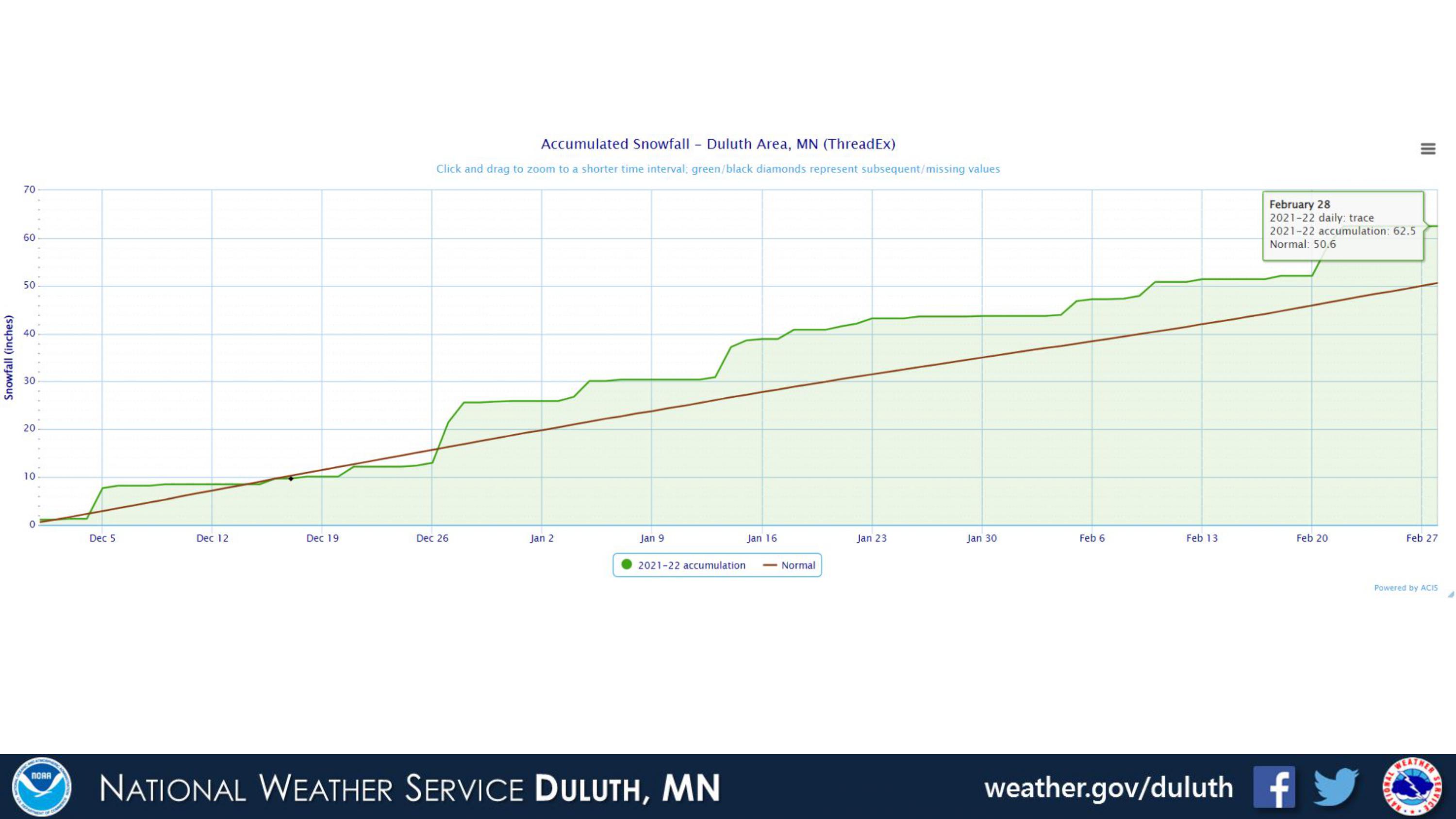
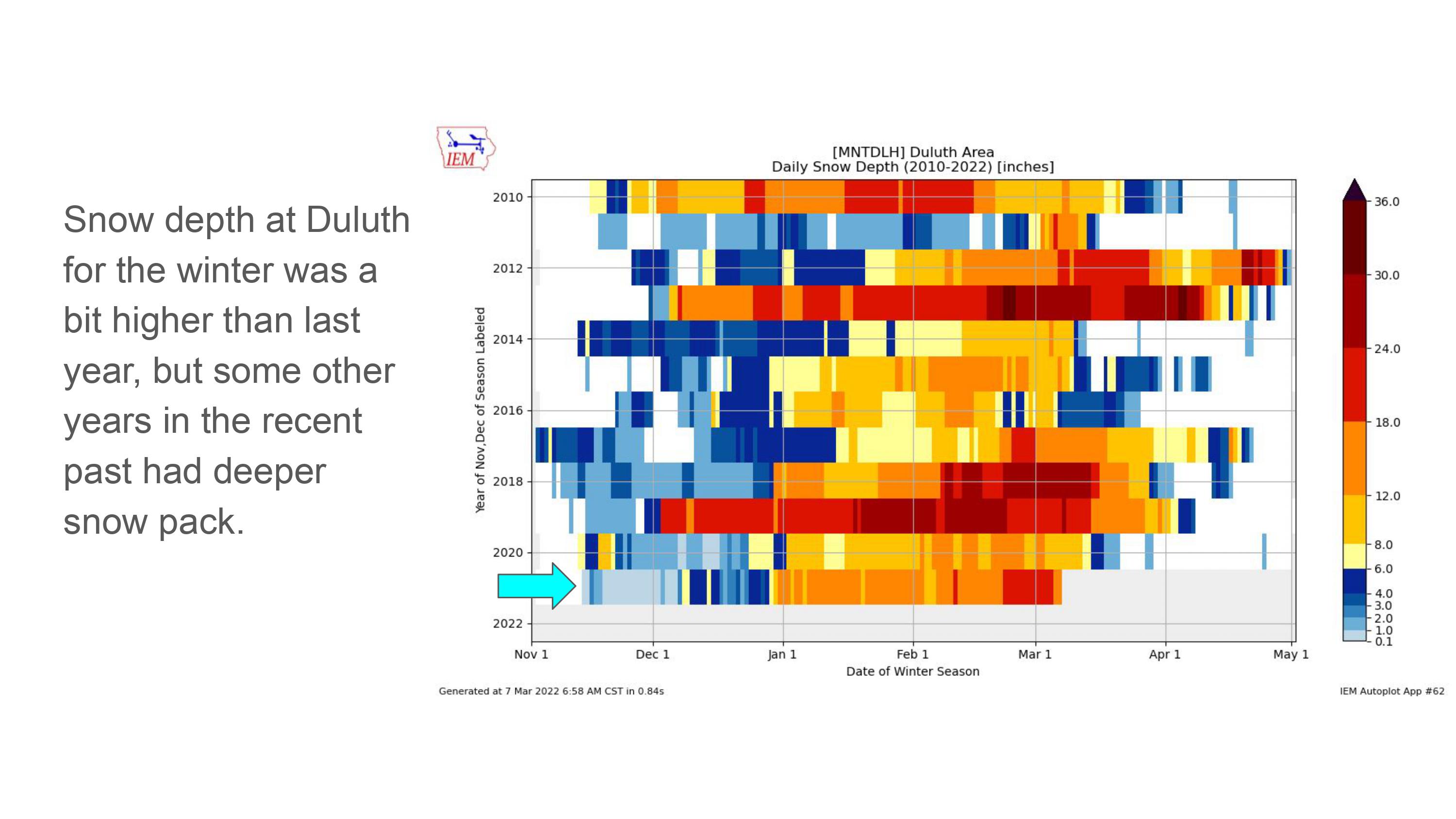
International Falls
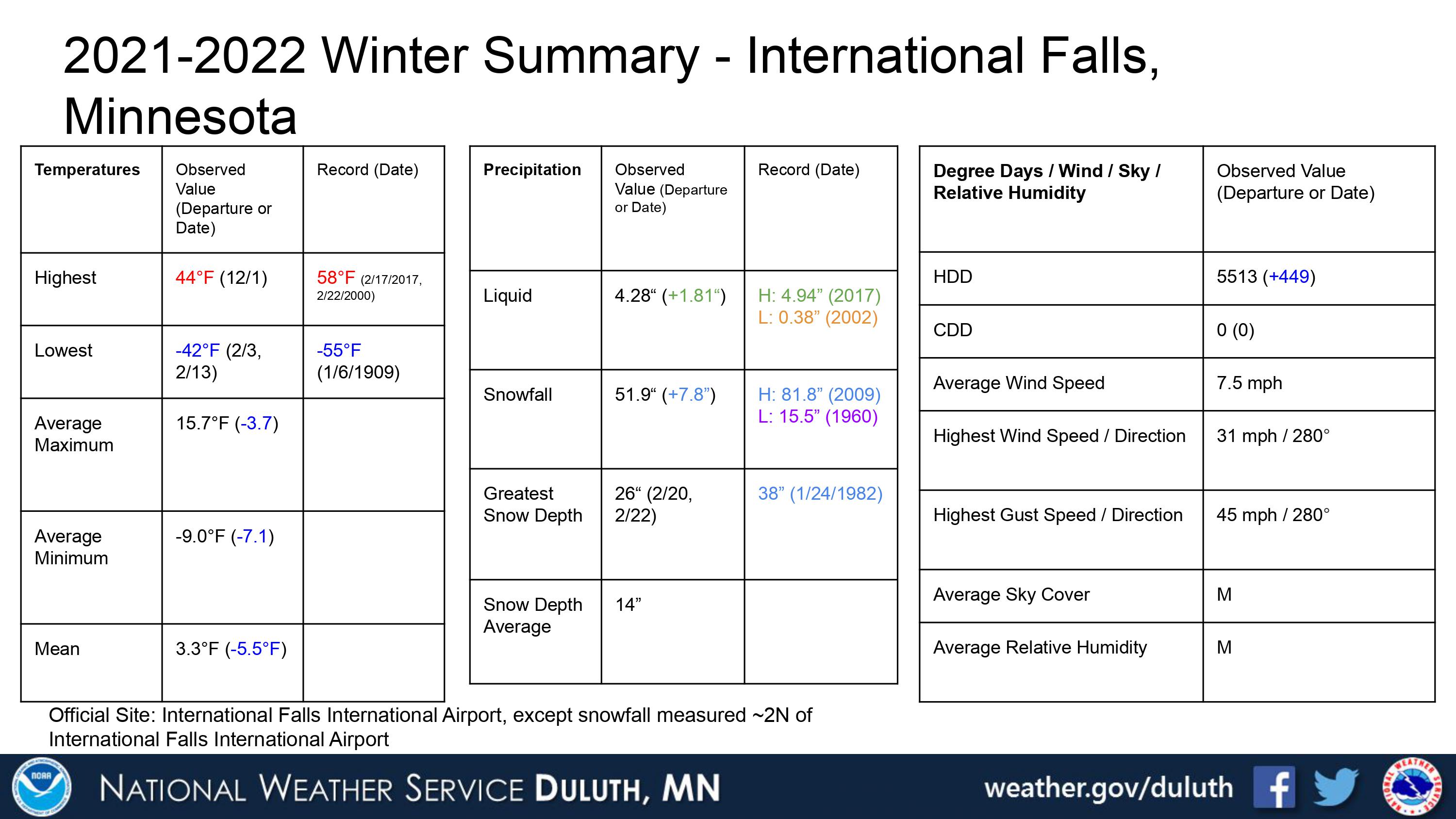
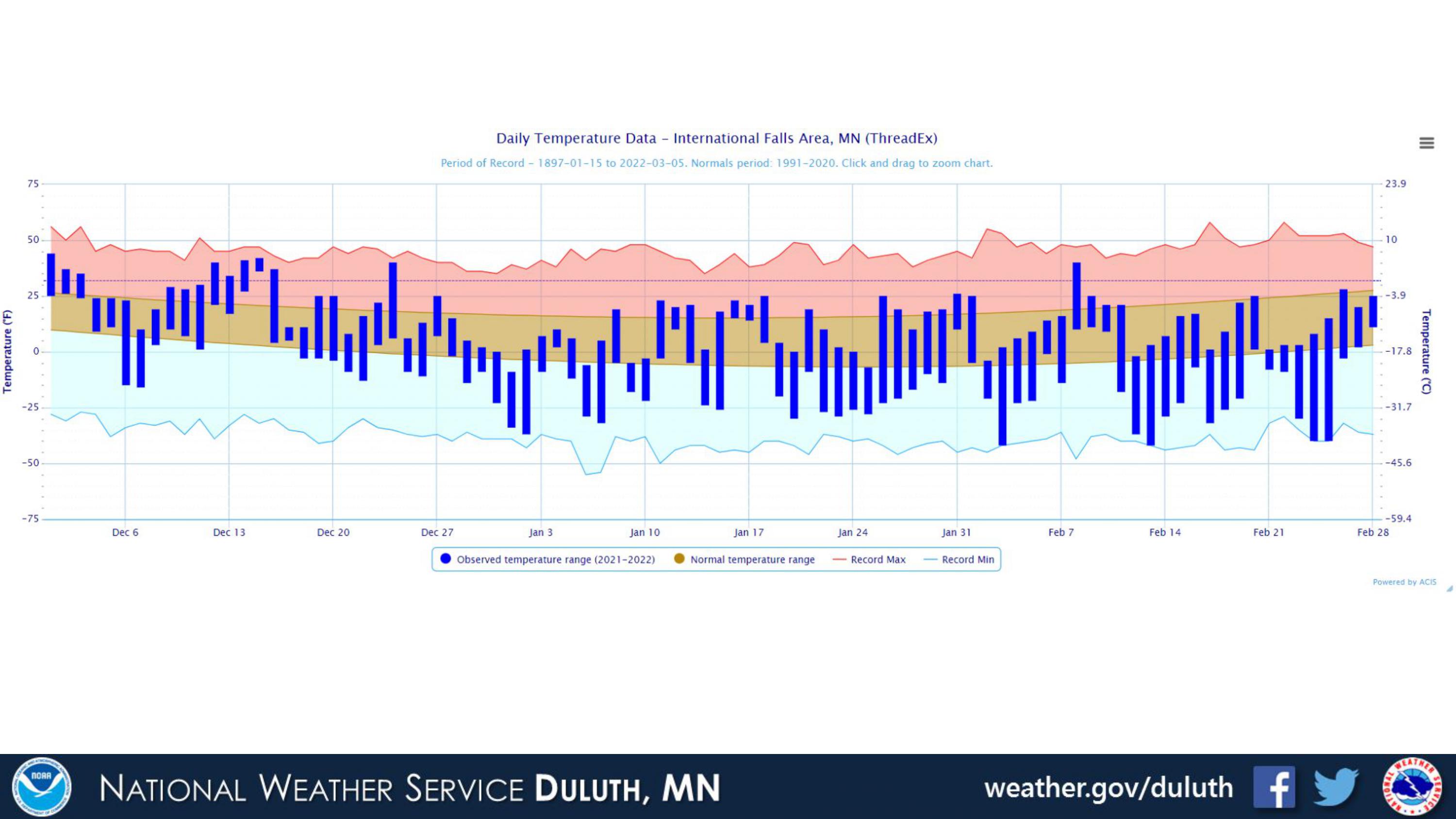
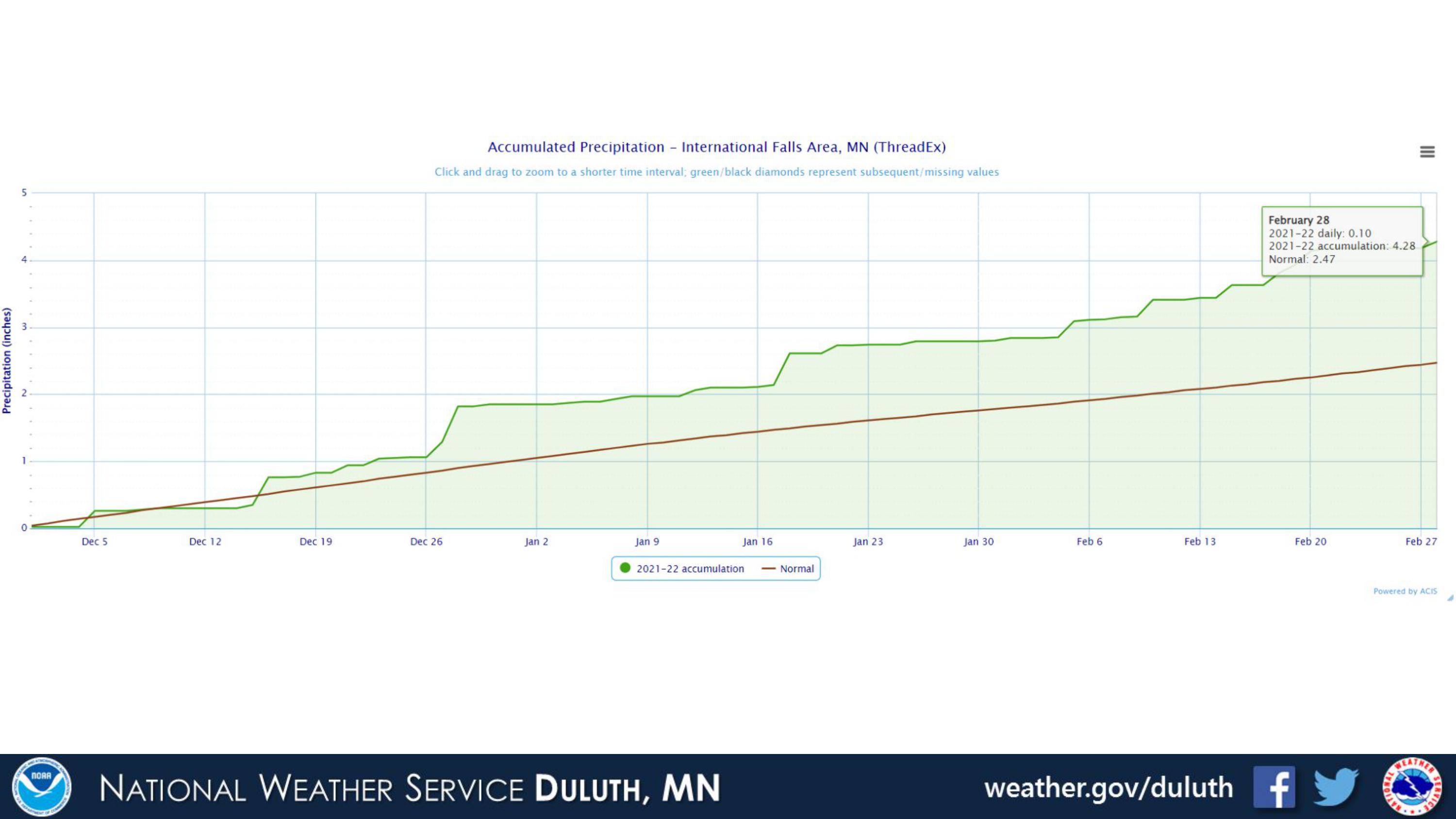
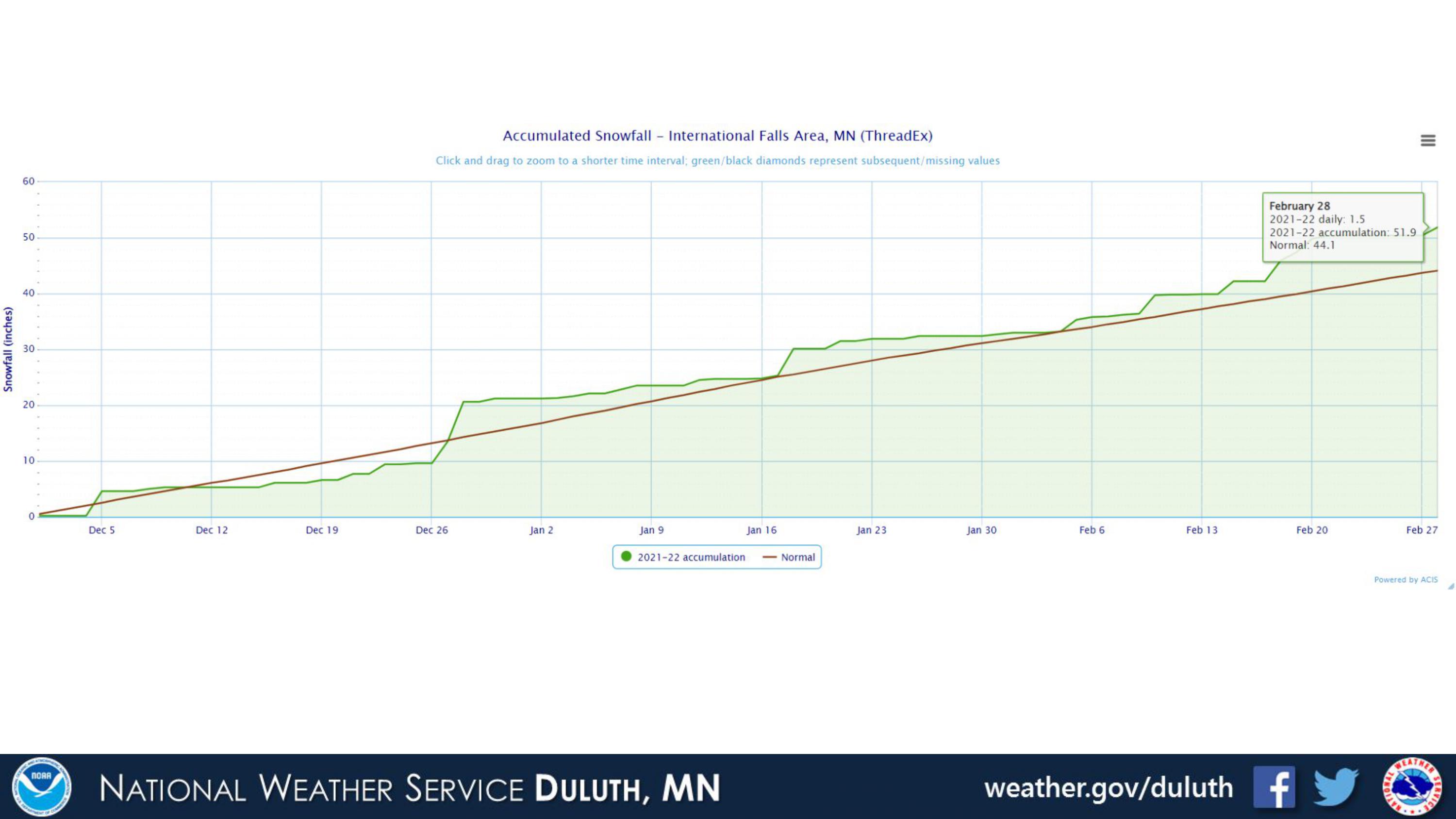
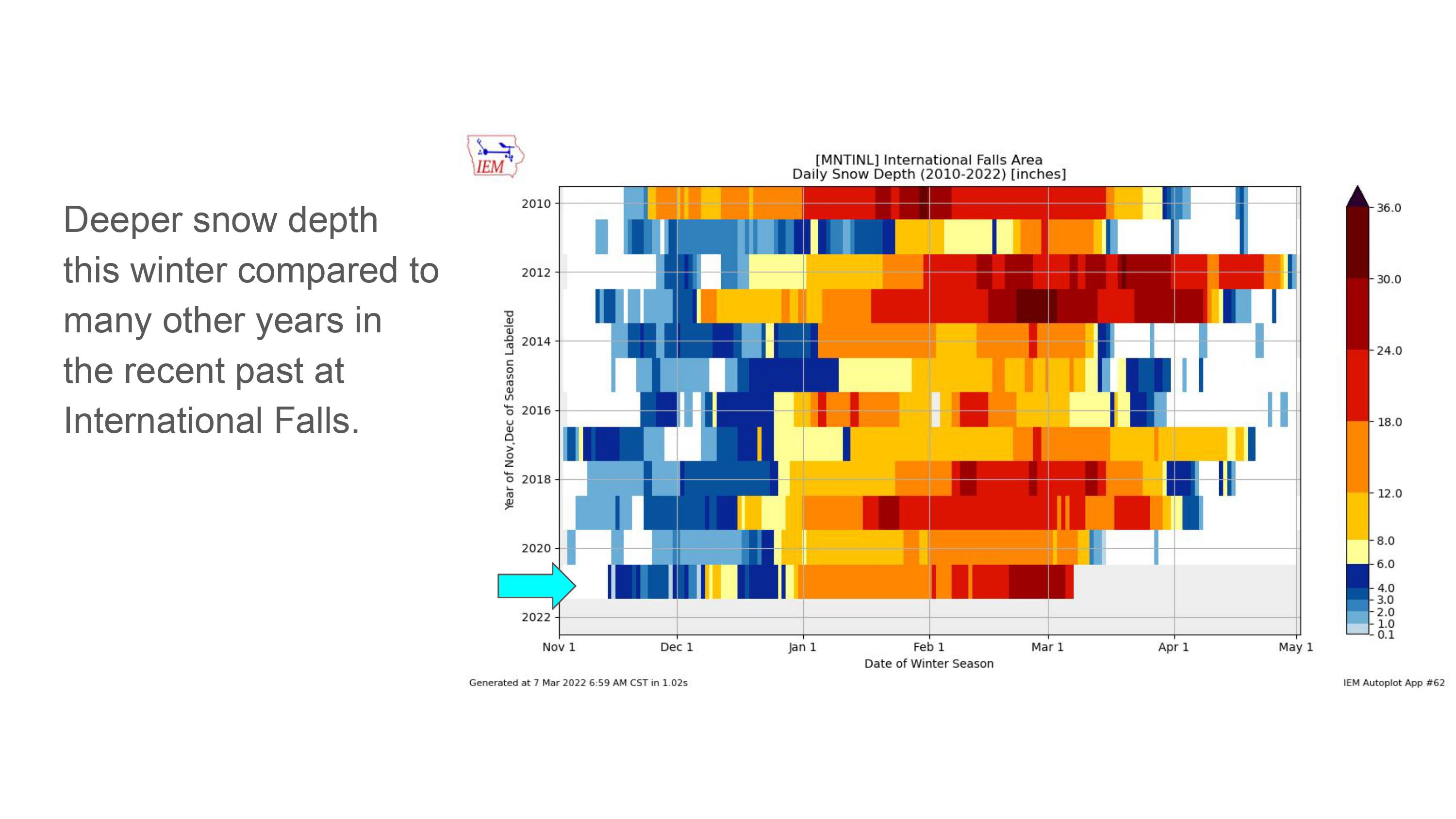
Hibbing
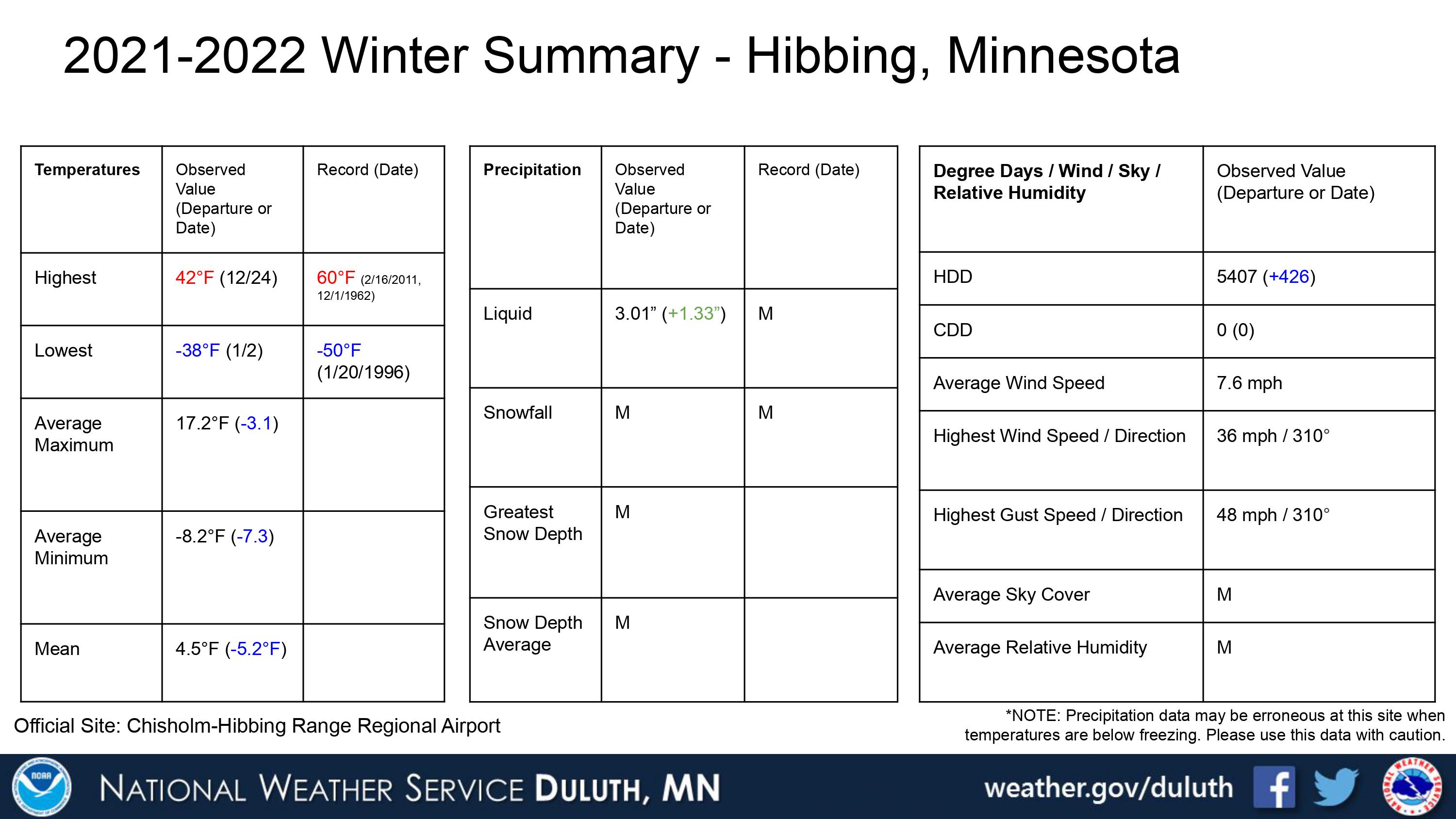
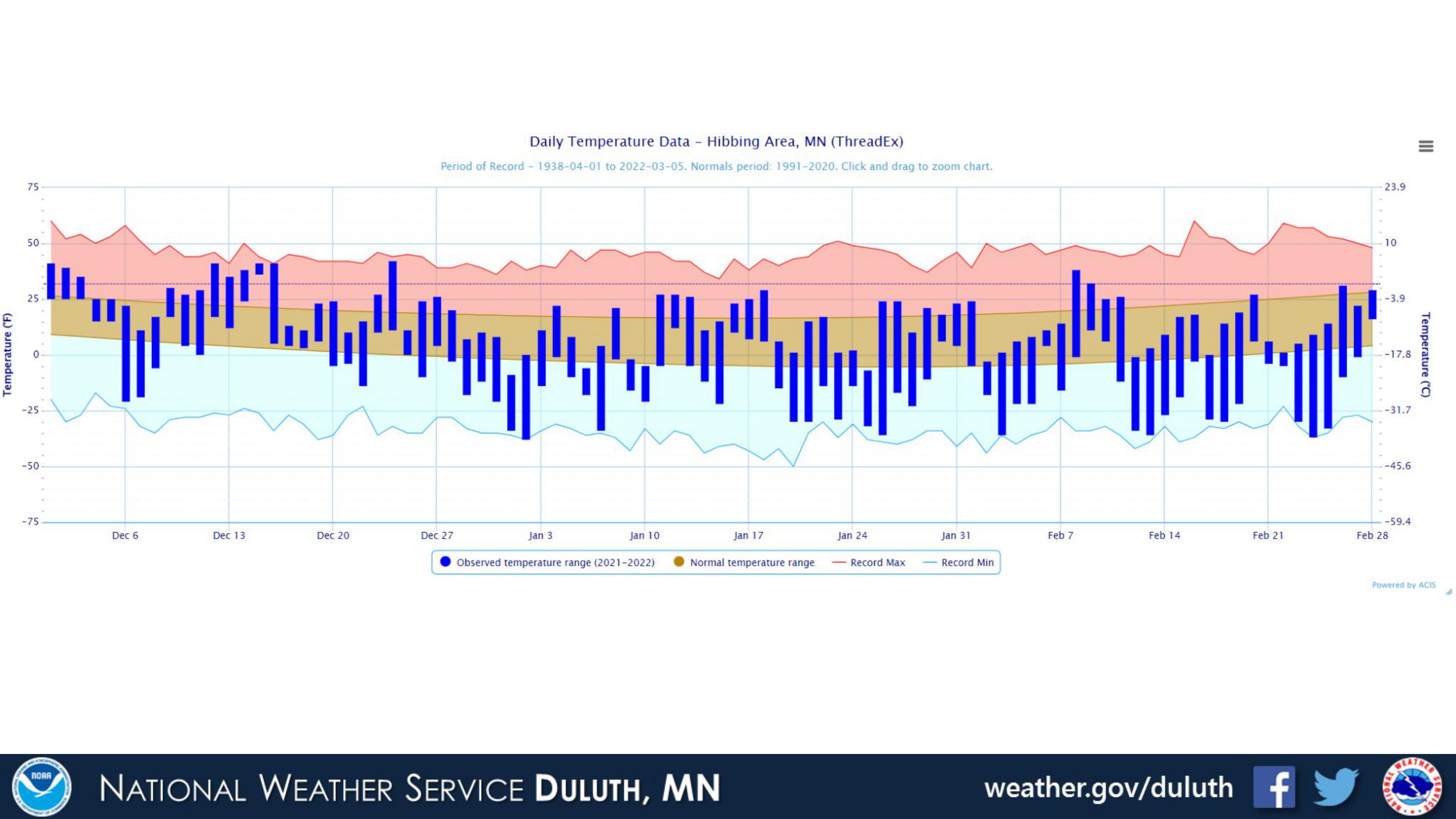
Brainerd
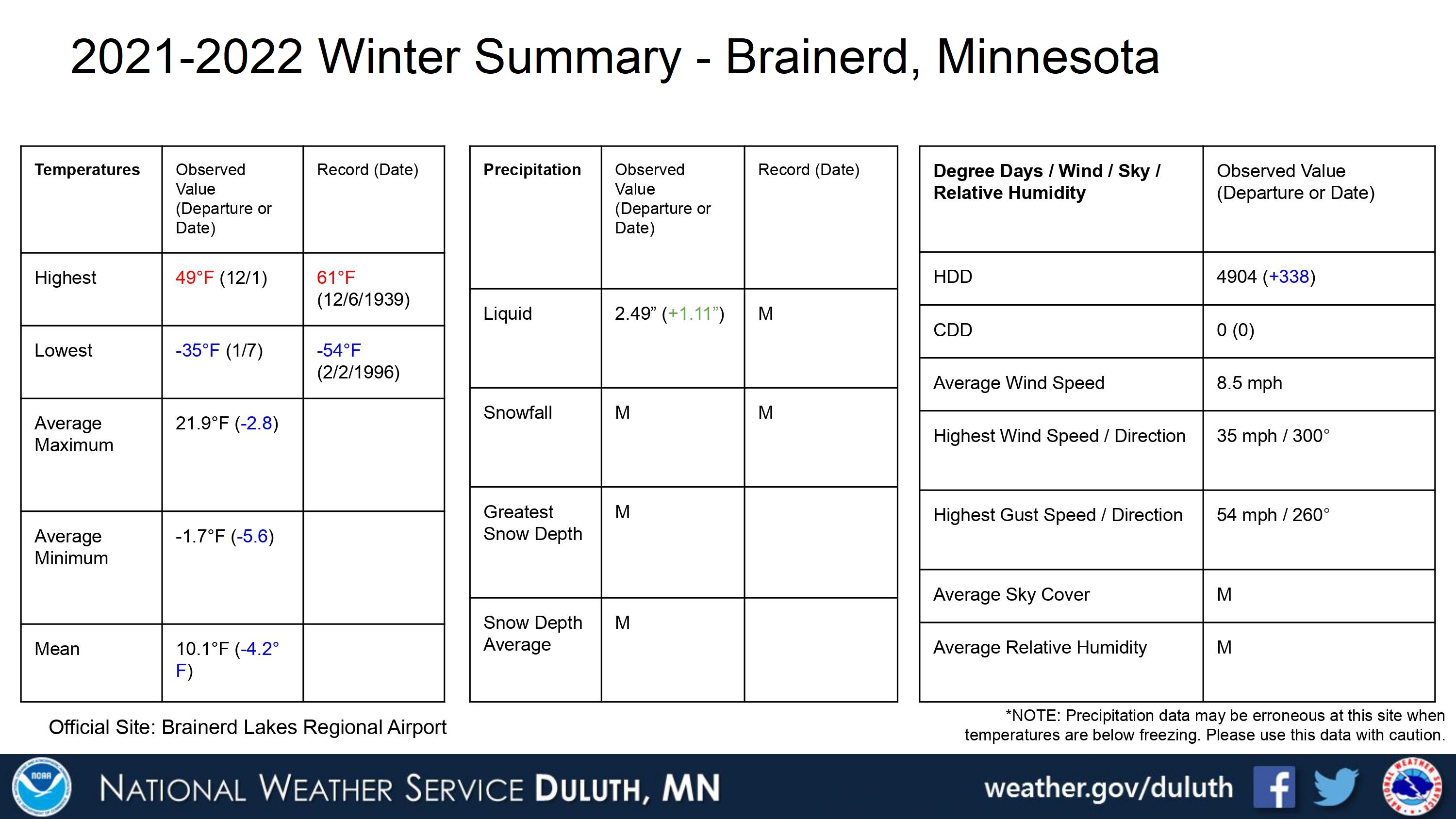

Ashland
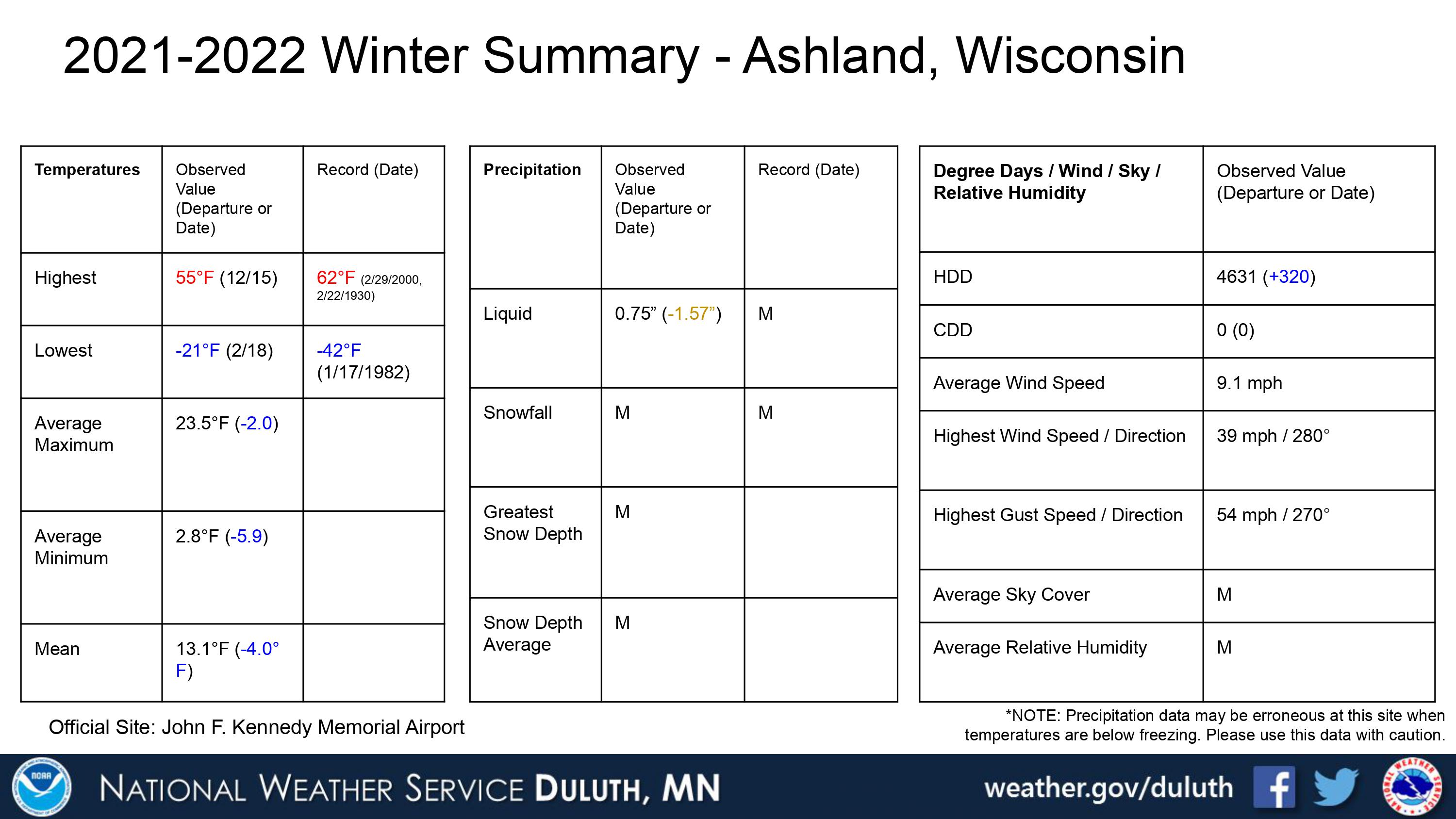
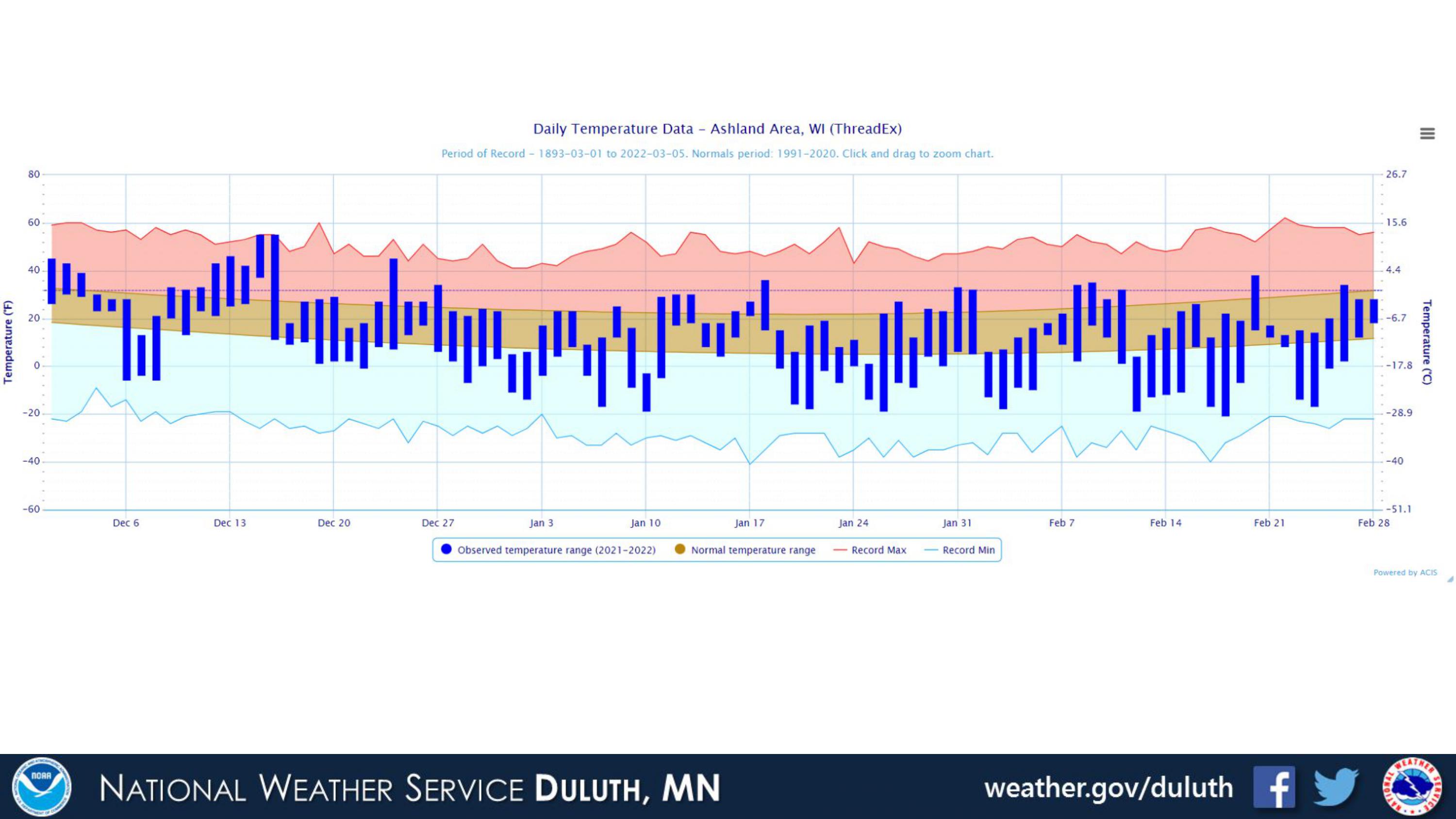
Summary
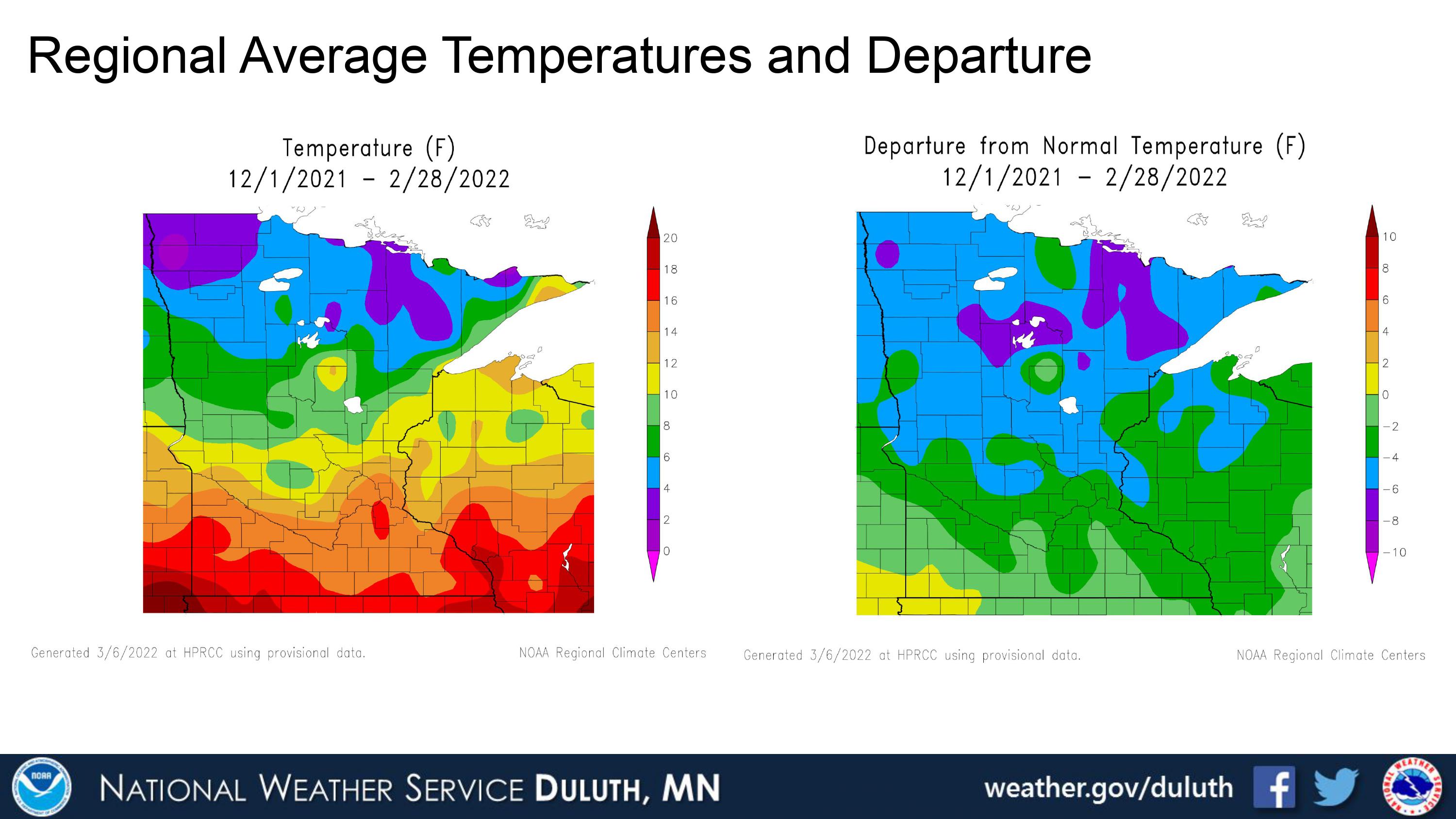

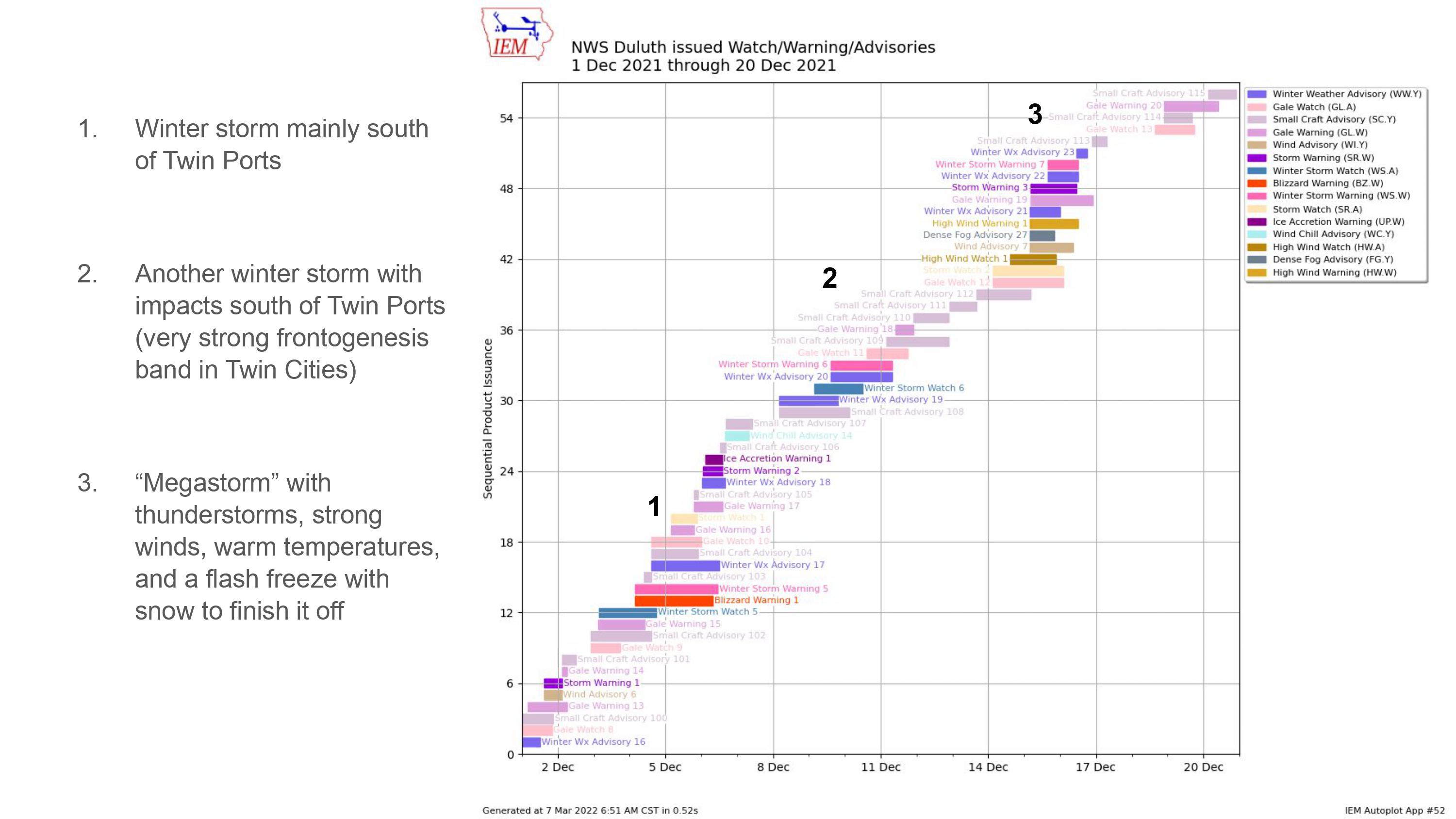
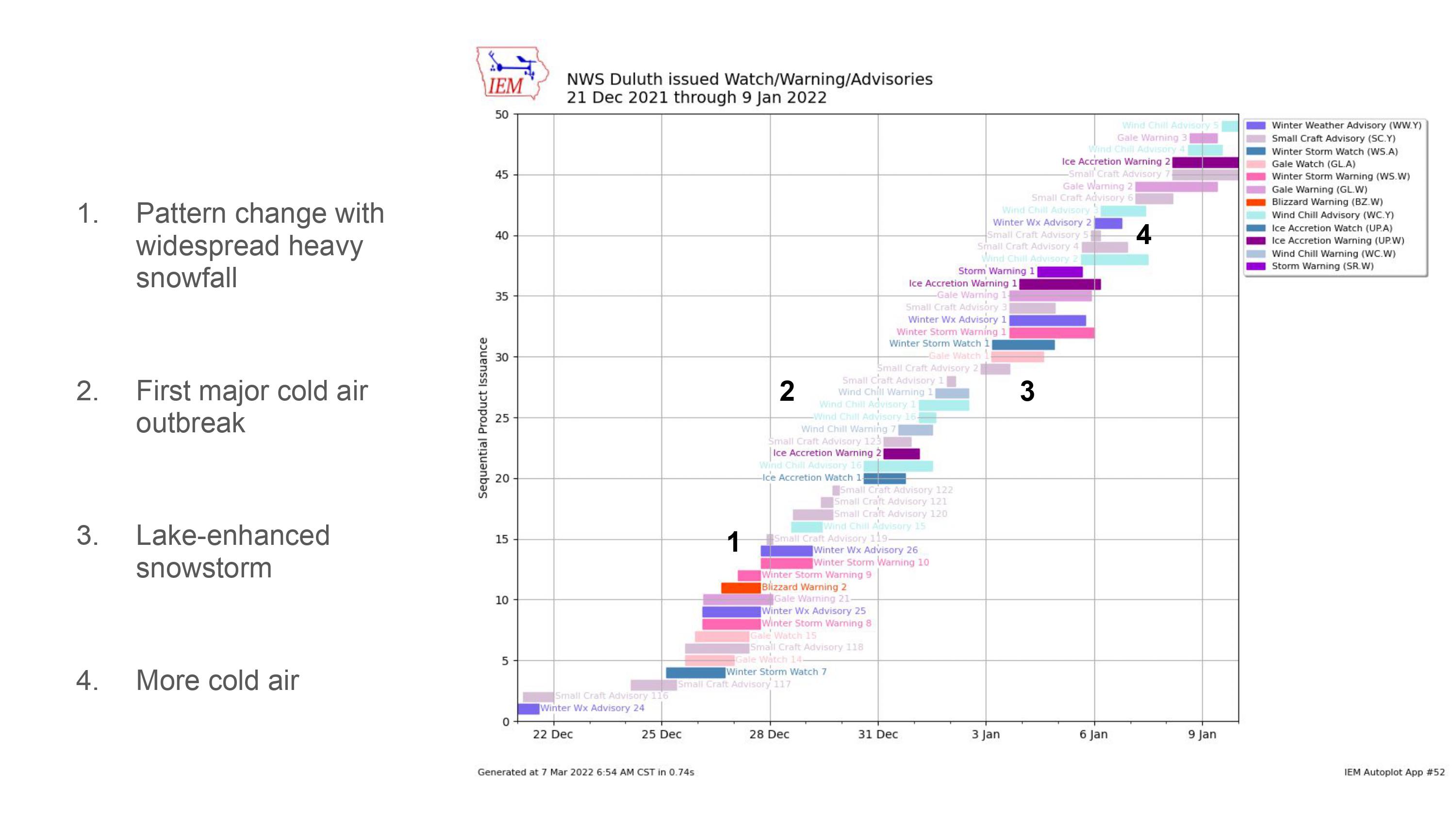
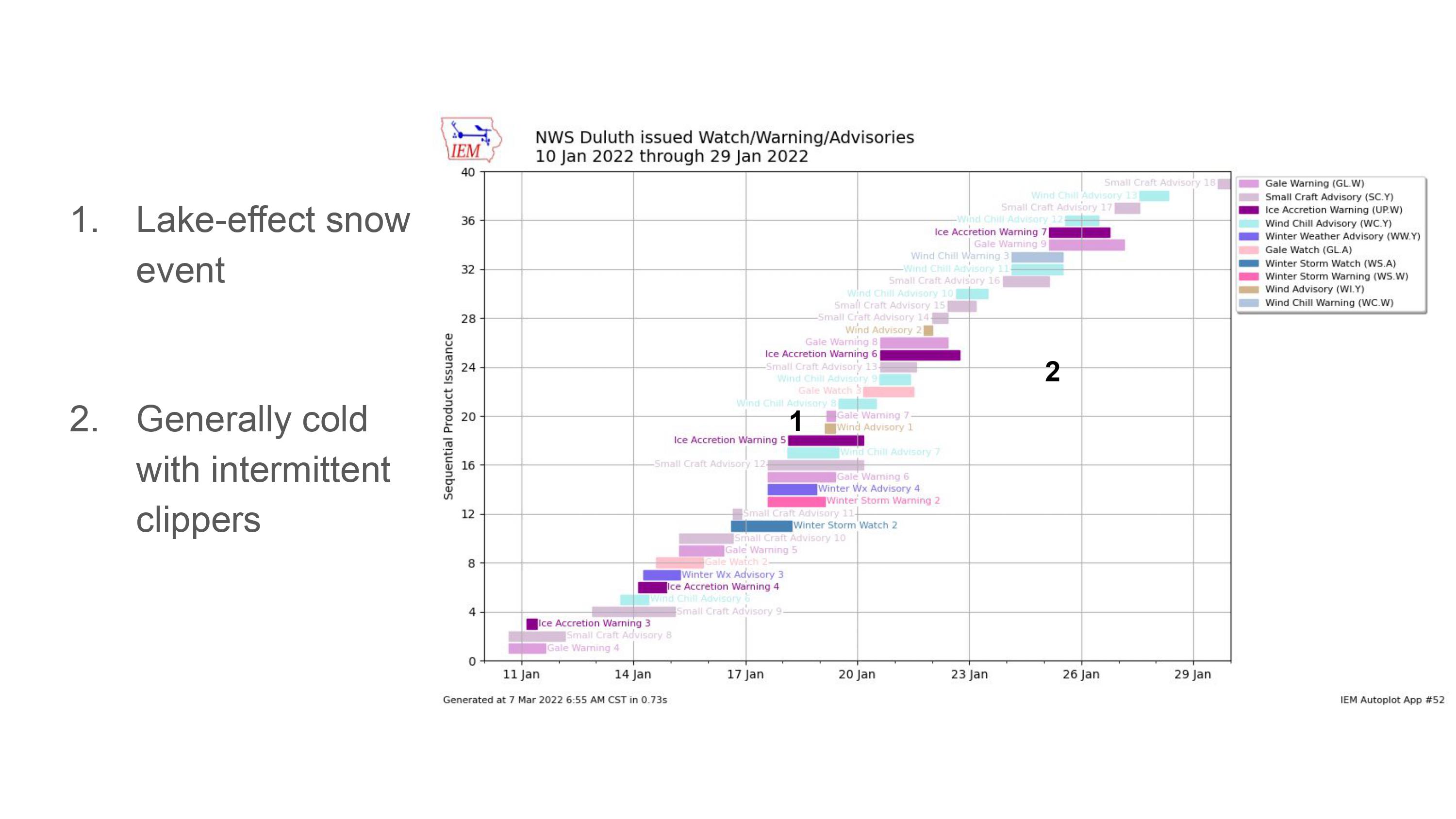
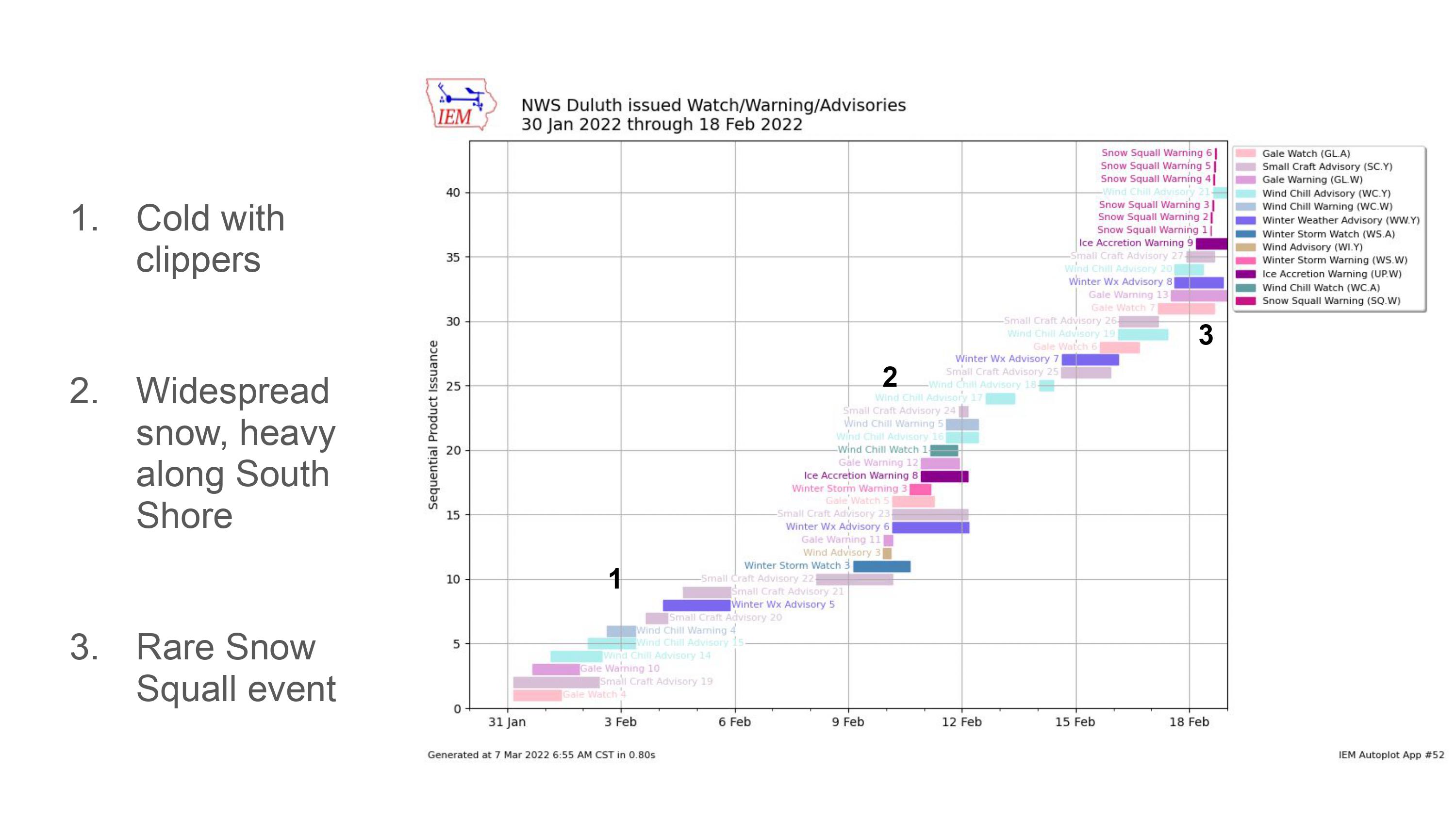
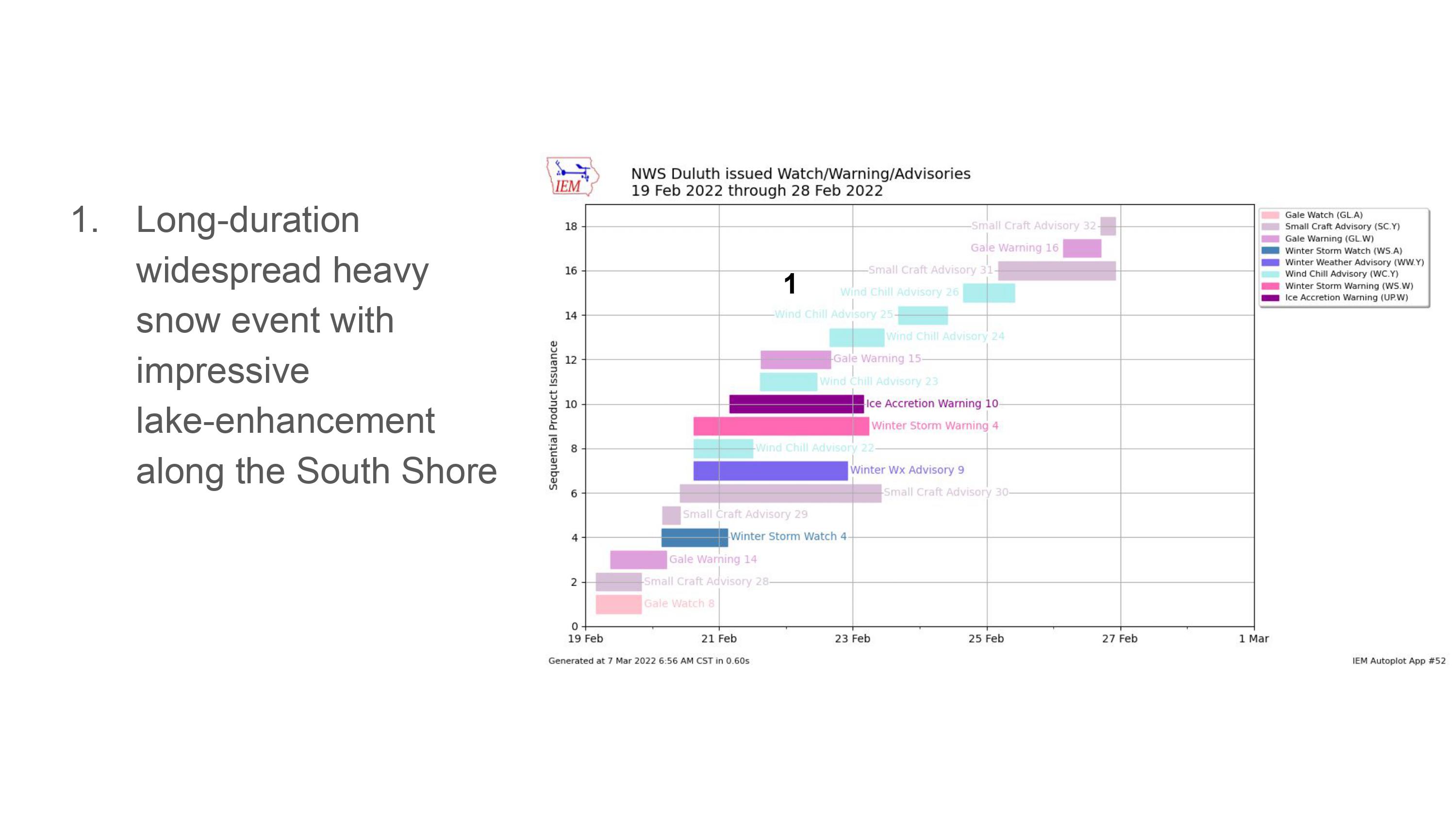
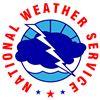 |
Media use of NWS Web News Stories is encouraged! Please acknowledge the NWS as the source of any news information accessed from this site. |
 |
Forecasts
Fire Weather
Great Lakes
Local Text Products
Winter Weather
Local Area Forecasts
Aviation
Marine
Rainy River Basin Page
Current Conditions
Current Observations
Public Information Statements
National Snowfall Map
NOHRSC Snow Analysis
Rain/Snow Reports
Winter Monitor
US Dept of Commerce
National Oceanic and Atmospheric Administration
National Weather Service
Duluth, MN
5027 Miller Trunk Highway
Duluth, MN 55811-1442
218-729-6697 - Duluth; 218-283-4615 - Intl Falls
Comments? Questions? Please Contact Us.

